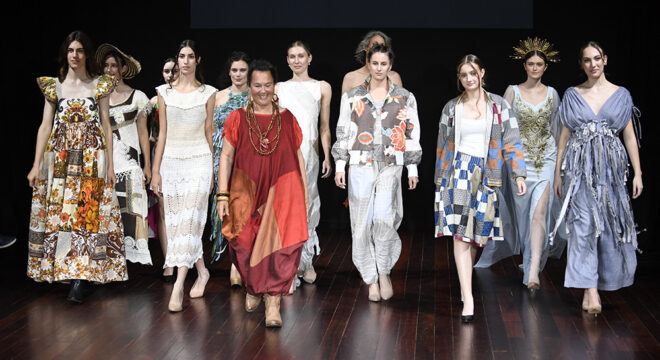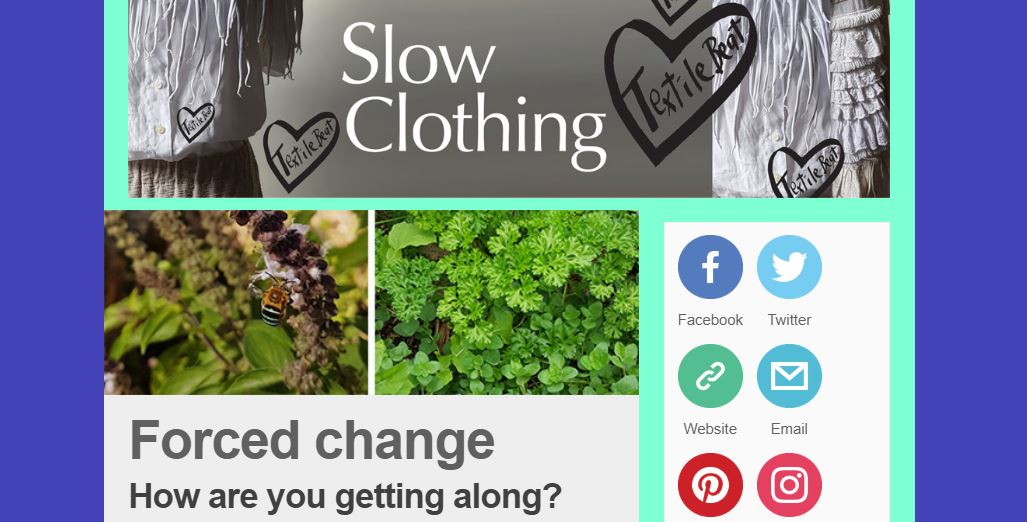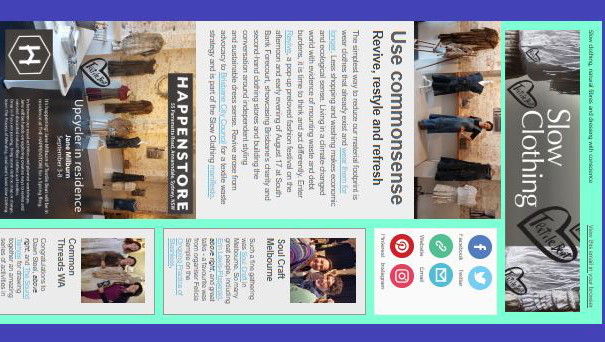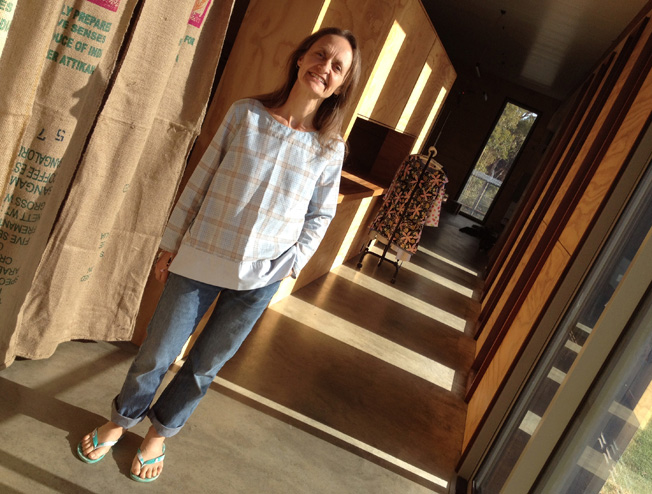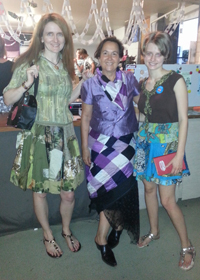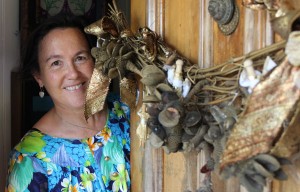At no time in history have there been so many clothes and textiles in the world and upcycling is a proudly practical and regenerative response to this excess. Instead of fibres being dumped, the upcycling process transforms them into new pieces that are original, beautiful and sustainable.
Outstanding creative techniques, design and details were evident in the Upcycling Challenge Collection on the runway at Eco Fashion Week Australia recently where hero natural fibres were rescued and elevated into exciting ‘new’ ensembles by hero designers.
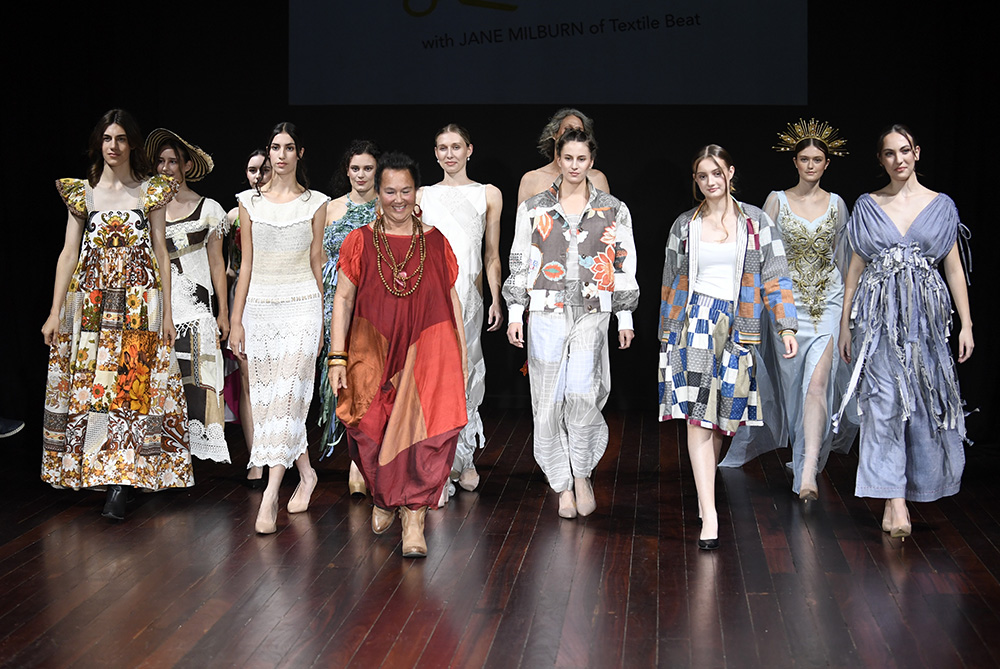
A beautiful crochet dress was created by textile artist Karen Lynch who went to extraordinary lengths to deconstruct old doillies, spin them into double thread and crochet that into a contemporary shift featuring the natural shades of the original crochet.
Designer Emma Bond created a stunning silk gown from assorted offcuts purchased from a bridal salon that were collaged together in complex diamond shapes with crystal embellishments.
Jodie Kemp merged sustainability with a whole lot of heart by sewing together vintage patterned textiles from the 1940s to the 1990s across the decades into a beautiful frock that breathes new life into forgotten materials.
Erica Bates brought together mid-century barkcloth curtaining, a Sydney souvenir teatowel and various other textile remnants to create a classic bomber jacket, loose pants and top.
Mary Walker elevated a simple chocolate velvet skirt into an artform using various paint, stitch and embellishment techniques then teamed it with a lace-back camisole top.
Jenny Stuart created detailed patchwork fabric from patterned offcuts then turned that into classic comfortable zipper jacket and skirt set.
Pam Prince recycled faulty but beautiful fabric that was destined for landfill into a striking woven bodice made on a peg loom and teamed with matching trousers. Together they evolved into her Piante Cascata inspired by the Giant Tasmanian Kelp project.
Spent cotton hospital scrubs were the ingredients that Tayla Parnham shredded into strips then knitted into a top and skirt that featured knots and fringe to tell its story of rejuvenation and zero waste.
Kathleen Highfield elevated pale blue cotton remnant materials into a princess dress by adding sheer sleeves, a bodice of sequins and a simple crown.
Anna Petrovic transformed a beautiful silk scarf into a top which she teamed with sculptured- hem skirt made from salvaged materials.
Carmen Tyrer took upcycling to the next level by creating euclay – a material she made from upcycled eucalypt leaves – as the hero ingredient for her dress, hat and bag made by combining hessian, cotton, doillies and lace.
It was an honour for me to steward these beautiful creations on the runway in Perth for the 2024 Upcycling Challenge at Eco Fashion Week Australia. Thank you to the designers, models and EFWA founder Zuhal Kuvan-Mills for the opportunity.
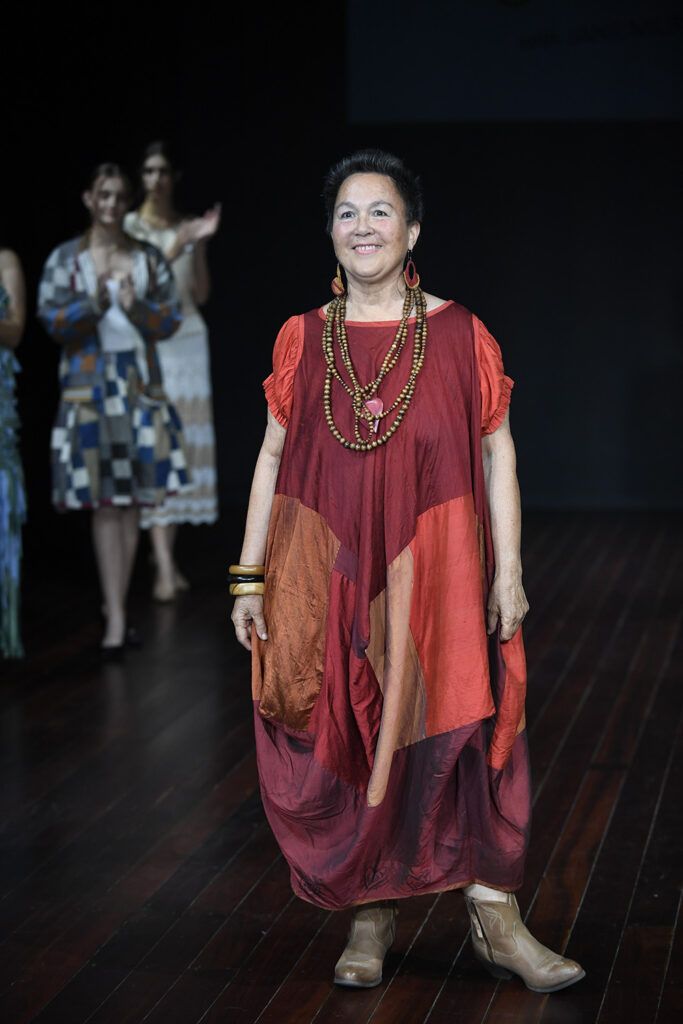
Sustainability is all about longevity and reusing materials until they wear out. This upcycling challenge was therefore a fitting occasion for another adventure of the red dress. This was the 60th time I have worn my upcycled silk geometric dress which I made in 2019 from squares and rectangles reclaimed from four opshop dresses and one from my wardrobe.
